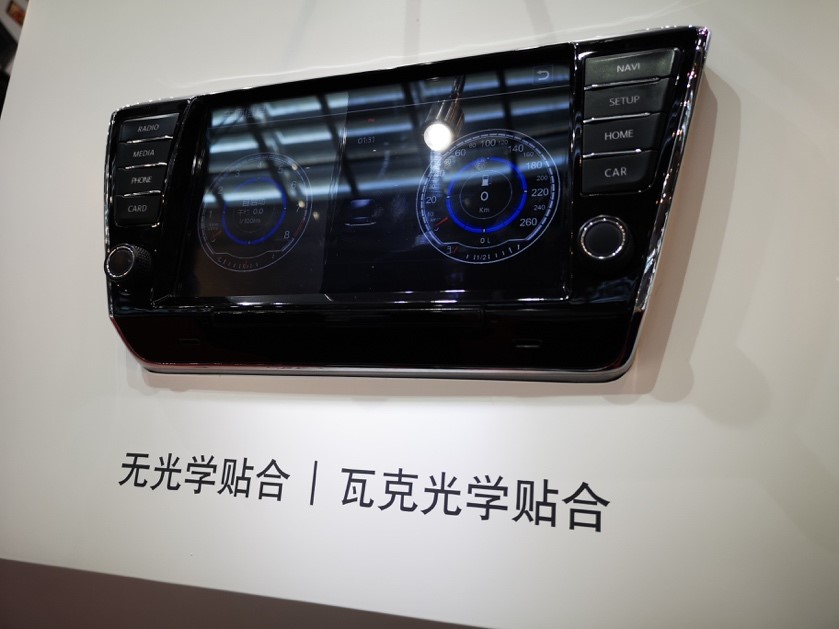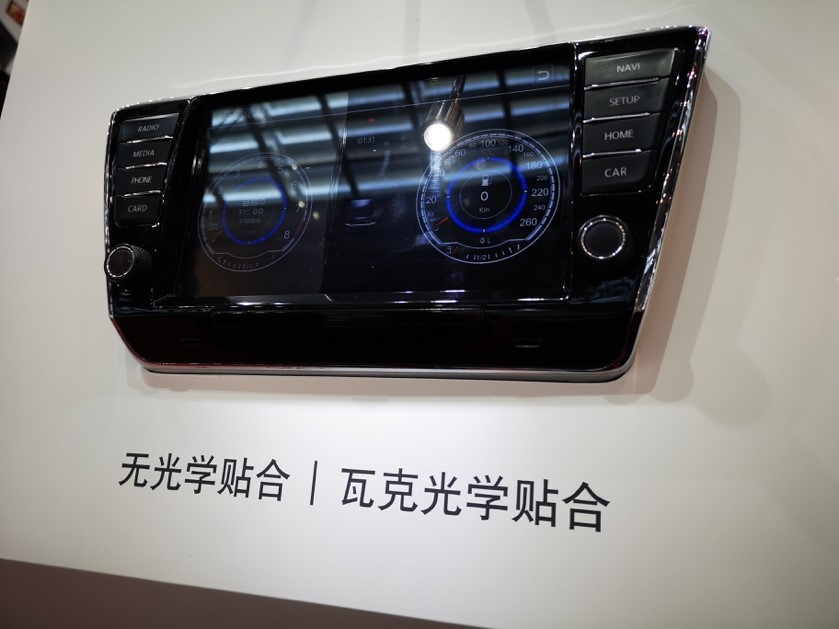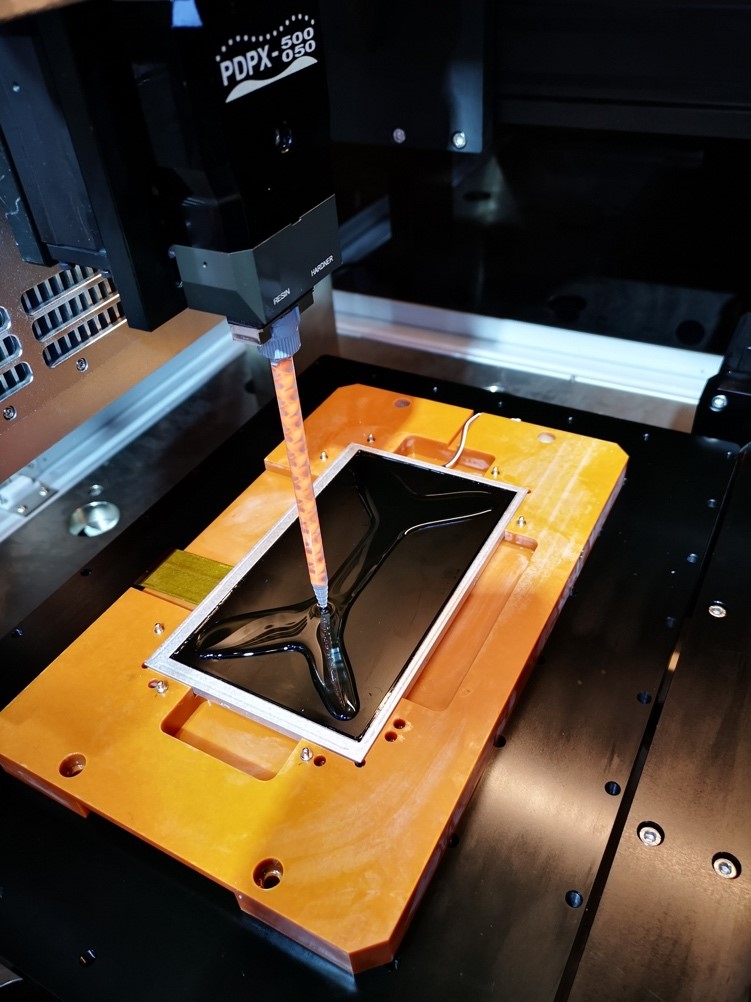Welcome to SHENZHEN EXCELLENCE TECHNOLOGY CO. , LTD!
Welcome to SHENZHEN EXCELLENCE TECHNOLOGY CO. , LTD!

Curved, folding, full-screen, flexible OLED, the phones, cars, billboards you see on the screen may be soft and bent and larger. In addition to the screen itself, the fit between the display panel and the outer protective material, there is a new change to this critical process...
Cars are no longer satisfied with the traditional 3.5 inch display range, and larger screens are being adopted. If there is no glue between the screen and the protective screen as before, it is easy to form a reflective effect, which affects the driver's line of sight, and dust and other impurities are easy to penetrate. Today, car screens are more than 10 inches or larger, and silicone is a better option for fitting onto them.
Dong Kan, Market Manager of Silicone Industrial Solutions of Waco Chemical (China) Co., Ltd., introduced that major automobile manufacturers gradually adopt optical silicone as the standard fitting for automobile display screen.
However, in the field of mobile phones, the use of optical silicone is not widespread. Usually, OCA optical adhesive is mainly used for the bonding between the mobile phone protection screen and the display screen. It is made of optical acrylic adhesive without substrate, and then laminated with a layer of release film on the upper and lower layers. It is a kind of double-sided adhesive tape without substrate material.
Why isn't this acrylic used in cars? Dong Kan analysis said that acrylic glue is generally used in mobile phones, tablets and other devices, it is not suitable for outdoor use. Acrylic in the long-term sunlight is prone to yellowing phenomenon, high shrinkage rate, about 2-3%, easy to form around the fold.
The shrinkage rate of organic silicon is about one thousandth, and there is no yellowing phenomenon, not affected by strong light irradiation. Therefore, the use of optical organic silica gel is more suitable for automobile, navigation, medical treatment, outdoor billboards and other applications.

At the scene of the interview, the reporter saw a device demonstrating how to smear organosilicone on two boards and carry on the bonding. First of all, smear the surface of the display in the shape of a fish bone, and then smear the same glue in the middle of the back of the outer protective screen to form a short rectangle. Using these two shapes can effectively prevent the generation of bubbles in the lamination. The third step is to irradiate the glue with ultraviolet light, and then the two boards are bonded and gradually solidified.

The automobile market has become the explosive point of optical organic silica gel market. Wacker is very optimistic about this area, and Wacker has launched a new Lumisil 245-Gel UV optically bonded silicone GEL. This product has good adhesion to plastics and high bonding strength. Its soft gel structure helps to release stress and reduce vibration. It can be widely used for optical display laminating of various structures, materials and environments, especially for sensitive polarizer and plastic + glass (P+G) laminating applications with high difficulty.
According to Dong, for safety reasons, car makers prefer to use plastic covering on car display screens to avoid glass splashing when the car is hit and injuring drivers and passengers.
Although OCA optical adhesive is still widely used in the field of mobile phones, the rise of curved screen and folding screen gives optical organic silicone more opportunities. It is reported that Wacker is developing silicone suitable for surface bonding. According to the analysis by Dong Kan, the glue flows down from the top when the surface is bonded, and the stress at the top is different from that of the flat surface, so the bonding requirements are higher. Wacker is currently working with leading customers to discuss and test solutions.
To move from acrylic to organosilicone, the client has started to make equipment investment deployment. Wark provides the overall material solution, including equipment and process advice, to help customers establish production system. Once the testing and mass production equipment is in place, the organosilicone market will start to scale up.